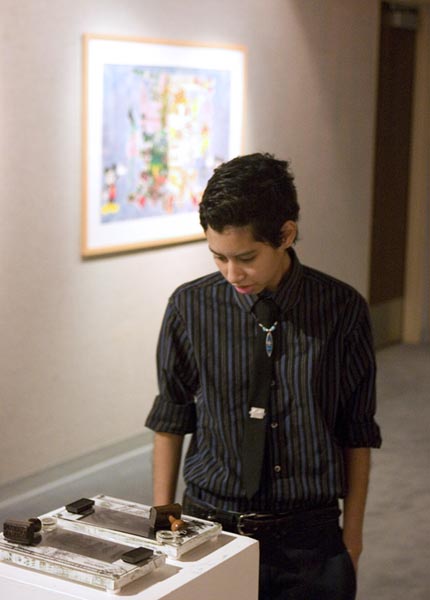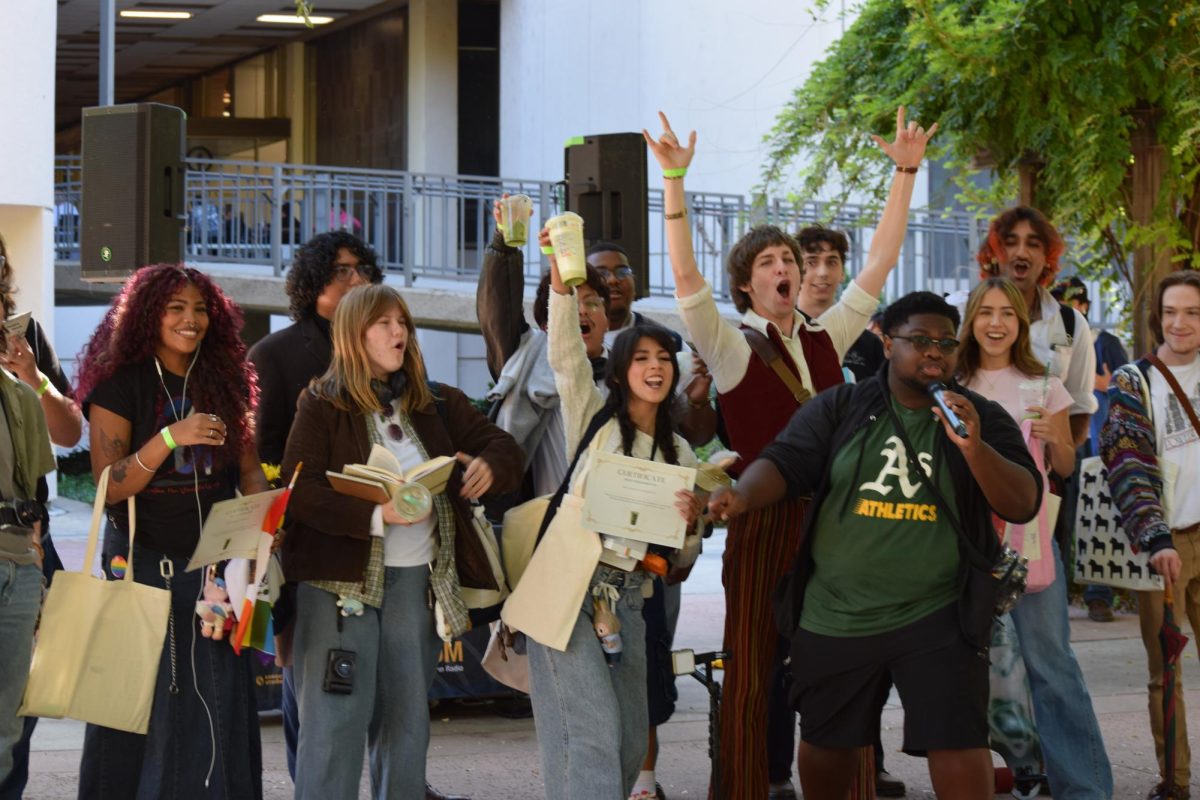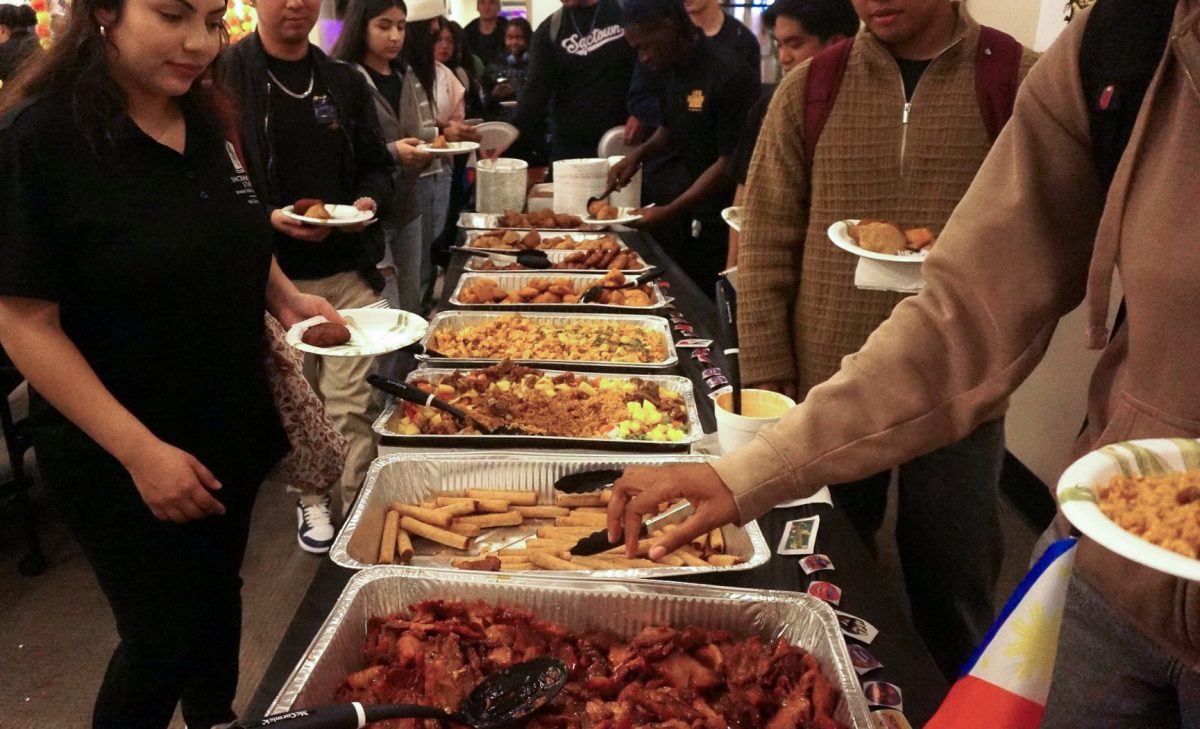Xicanismo: Chicano art

Senior Angelique Lopez experiences the Xicanismo exhibit, a collection of Chicano art displayed in the Union Gallery.:
October 9, 2008
What do plastic toy soldiers, Speedy Gonzalez and Arnold Schwarzanegger have in common?
These are just some of seemly unrelated and insignificant items artist, poet and cultural activist Xico Gonzalez has managed to use as symbols to tell the stories and raise awareness of some of the world’s most troubling issues.
A combination of installation pieces and serigraphs are on display in the University Union Gallery in his showing, titled “Xicanismo.”
“Most of the serigraphs in this exhibit were created to empower communities in their struggle for justice, equality and social change,” Gonzalez said.
Seven of the serigraphs featured in the exhibit were used to empower those marching against a bill which aimed to criminalise undocumented workers and those providing services to them. In Sacramento alone, 50,000 people marched in support of immigrants’ rights on “A Day Without an Immigrant” in 2006. Gonzalez was one of the thousands, marching as both an artist and a rally organizer.
“What inspires me most is the people that are out there working hard to provide a better life for their families. The invisible people that are working low-paying jobs to put food on their family’s tables,” Gonzalez said.
Gonzalez graduated from Sac State with a bachelor’s degree in Spanish and a minor in art in 2002 as well as his masters in Spanish two years later.
While at Sac State, he says he had the good fortune of working with the late professor Ricardo Favela for almost 10 years. Favela became his friend, role model and mentor and encouraged Gonzalez to join the Royal Chicano Air Force, an art collective founded at Sac State in 1969.
“Listening to Ricardo’s ‘Movimiento’ day stories motivated me to continue that legacy of community empowerment through the arts,” he said.
After leaving Sac State, Gonzalez went on to UC Davis to earn his masters in fine arts in art studio in 2007. Along the way, he was the receiver of the Dolores Huerta Activist Award and founded Revoltoso Books. He continues to instill his passion in others, teaching Chicana/o studies at UC Davis and art studio at Sac State.
Not just an artist though, Gonzalez is extremely active fighting for cultural and political issues. Throughout his pieces, he uses pop culture images familiar to most Americans as symbols of oppression and struggle.
In Gonzalez’s favorite serigraph, Speedy Gonzalez, Yosemite Sam and Mickey Mouse’s head on the Statue of Liberty’s are juxtaposed with a “Caution” sign warning on immigrants crossing. The words “Welcome to Gringolandia: Where racism and exploitation officially started in 1776 (the year the nation was founded).”
“I enjoyed Xico’s art on several levels…the vibrant images draw you in. Once you settle on the image, the power of it grabs you,” Shelby Wooton, a senior art major said. “I related to the Mickey Mouse and Speedy Gonzales comparisons to the U.S. and Mexico, the Disney influence over California and how it correlates with the corruption of capitalism in this state and the treatment of Chicano people.”
The sign, found along the U.S.-Mexican border, and Speedy Gonzalez represent undocumented immigrant workers. Yosemite Sam represents the Minutemen Project, an armed militia which patrols the border. Together, they tell a story of a working immigrant’s struggle for equality and rights.
“I like to do historical research when doing my artwork and present that research in my pieces, sometimes in a playful way,” Gonzalez said.
Other powerful pieces address issues such as the genocide in Darfur, the war in Iraq, and the Palestinian-Israel conflict. A United States-shaped checkerboard and a crate full of “free thoughts” are injected with satire but leave the viewer enlightened.
“I think it’s important to tell the stories of those who are often kept silent. Xico gives immigrants a voice through his art and relays their messages to the rest of the world,” art history major Chris Prout said.
Up next, Gonzalez will be working with 15 elementary school students to turn his “Viva la causa!” of Cesar Chavez into a mural to go in South Sacramento’s Cesar Chavez Intermediate School.
“That’s a big element of what I do, educating children through the arts and encouraging them to stay in school and pursue higher education,” Gonzalez said.
His political messages can be found on the walls of the gallery but he hopes that attendees will leave with an understanding that art can be used as a way to make changes.
“Art is a hammer that breaks down barriers ?the artist has a responsibility to his/her community,” Gonzalez said.
Casey Kirk can be reached at [email protected].





























































































































